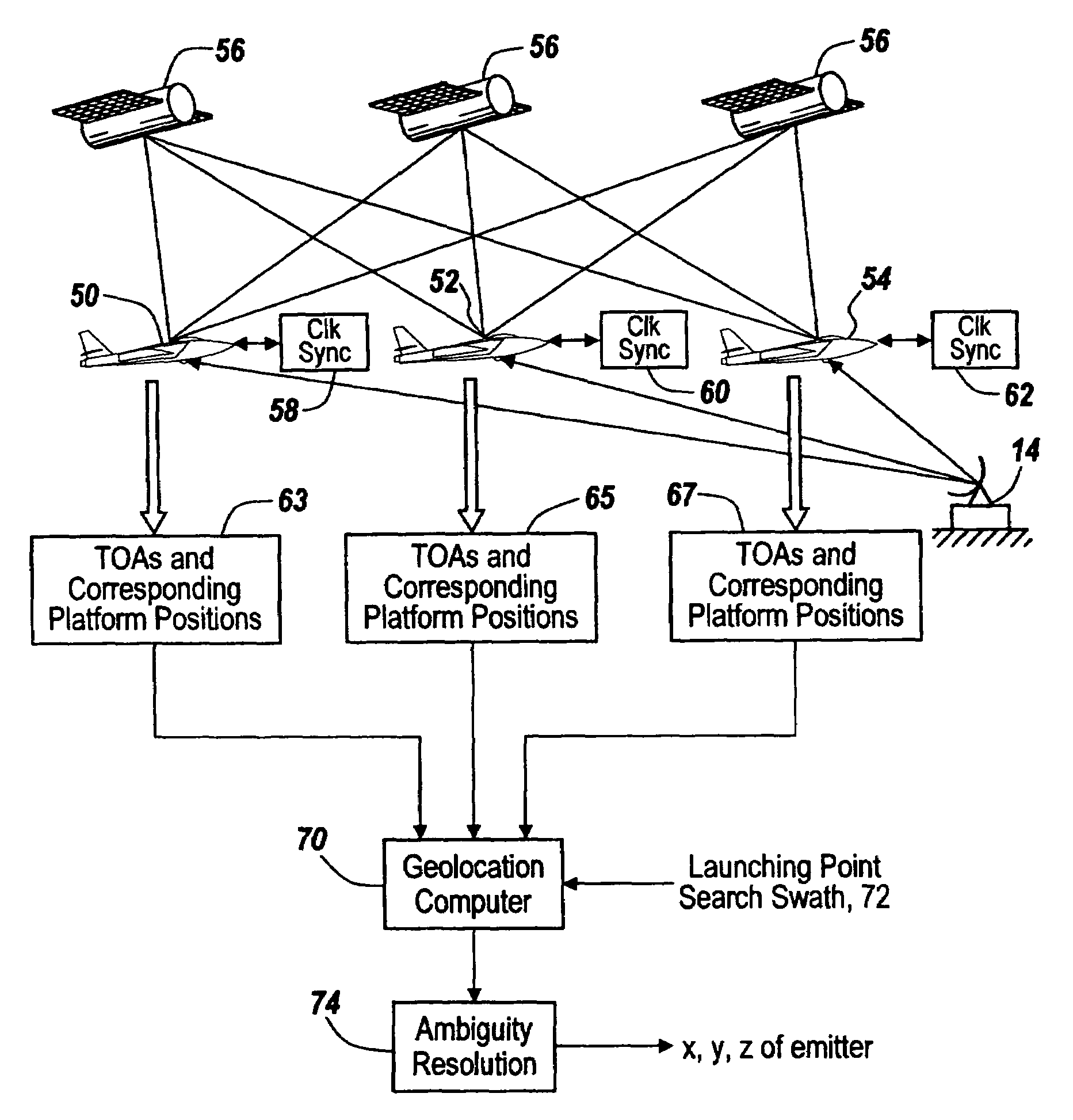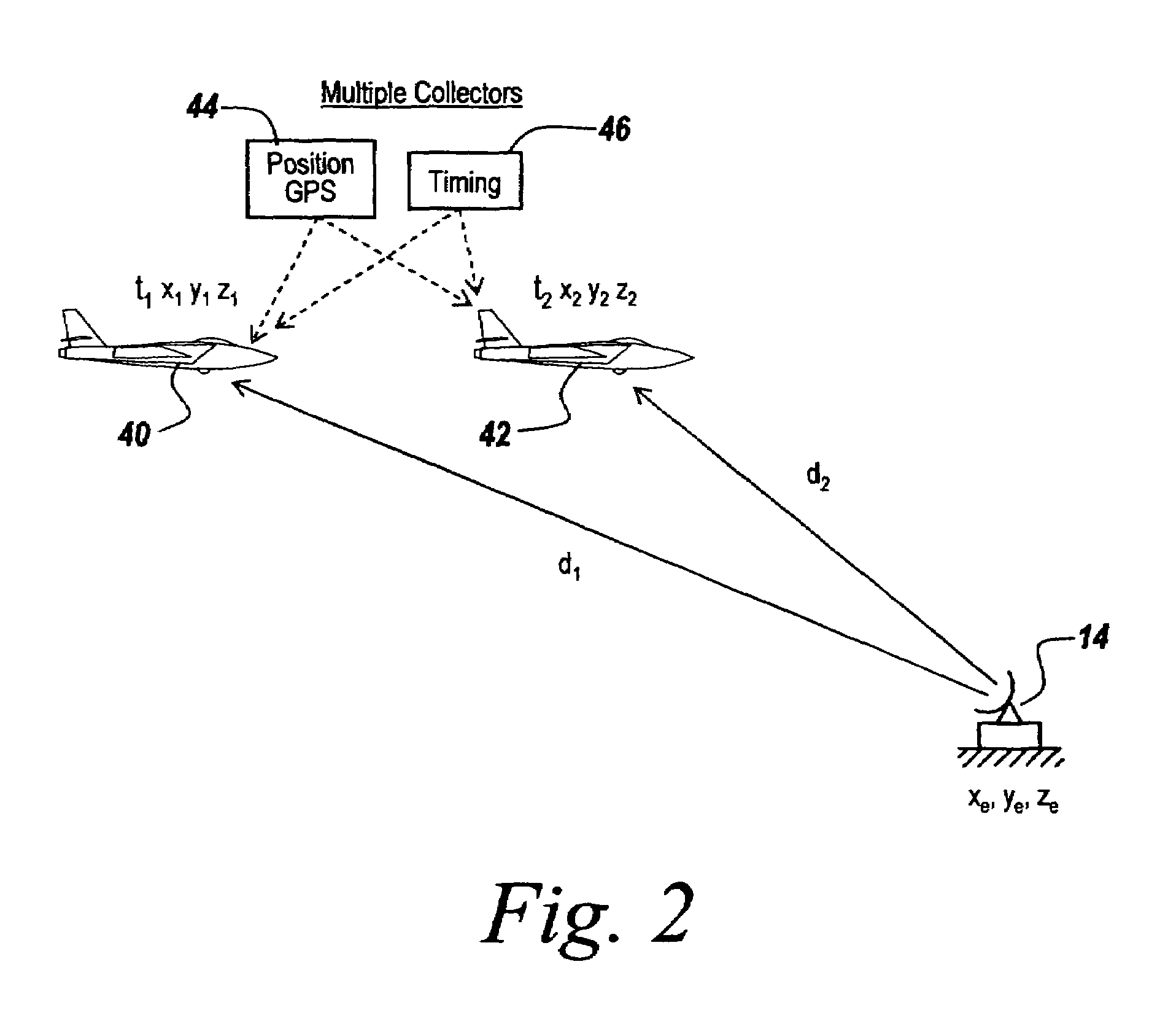Multi-ship coherent geolocation system
a geolocation system and multi-ship technology, applied in the field of geolocation, can solve the problems of tens of meters or less geolocation errors, and the length of time it takes, and achieve the effects of increasing the system's sensitivity requirements, less sensitivity, and limiting the amount of usable data
- Summary
- Abstract
- Description
- Claims
- Application Information
AI Technical Summary
Benefits of technology
Problems solved by technology
Method used
Image
Examples
Embodiment Construction
[0043]Referring now to FIG. 1, in a single-collector embodiment of the subject invention, an aircraft 10 at a position x1, y1, z1 at a time t1 flies along a path 12 so that, as illustrated at 10′, it occupies a position x2, y2, z2 at a time t2. It should be noted that the figure shows the arrival of two pulses at the collector. In practice, many more pulses must be collected such that the time to move from the initial location to the final location can be in excess of 30 seconds to establish an adequate baseline between the first pulse collected and the last pulse collected.
[0044]An emitter 14 produces a string or sequence of pulses 16 at a pulse repetition interval or PRI of between 205 Hz to 300 KHz for typical radars. It is noted that the aircraft when in position 10 is at a distance d1 from emitter 14, whereas when the aircraft is at position 10′ it is at a distance d2 from the emitter. Note also that the aircraft at position 10 receives a pulse 18 designated pulse1, whereas at ...
PUM
 Login to View More
Login to View More Abstract
Description
Claims
Application Information
 Login to View More
Login to View More - R&D
- Intellectual Property
- Life Sciences
- Materials
- Tech Scout
- Unparalleled Data Quality
- Higher Quality Content
- 60% Fewer Hallucinations
Browse by: Latest US Patents, China's latest patents, Technical Efficacy Thesaurus, Application Domain, Technology Topic, Popular Technical Reports.
© 2025 PatSnap. All rights reserved.Legal|Privacy policy|Modern Slavery Act Transparency Statement|Sitemap|About US| Contact US: help@patsnap.com



